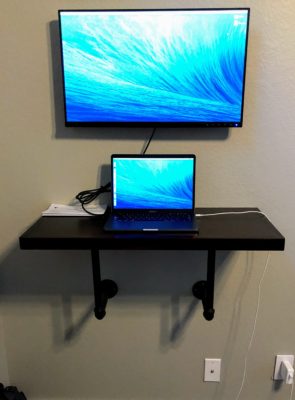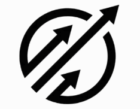A year ago I started writing a blog. At the time I had no plans to publish a book. But a few months in I caught the bug and decided to give it a shot.
As I started researching the ins and outs of the book writing process a couple of facts became clear.
- I would need to build an audience before publishing anything. So much of the book writing world is about creating awareness for your product.
- There are two ways to go about writing a book. One is to do everything yourself. The second is to work with firms that will ghostwrite and do most of the heavy lifting.
- The process was going to be intense. It seems like there is an endless list of tasks to getting a book published. When I started, I had no idea what the process entailed.
If you are about to set off on this journey, here are a few tools that will help.
Mental & Physical
For most people the issue isn’t choosing to start this journey, it’s stopping. If I had to rely on my willpower alone, I never would have finished. To set myself up for success, I needed to prepare my body and my mind.
1. Sleep
At this point, everyone should be aware of the science around sleep. It is crucial for us to operate at our peak. When I started this process, I decided to hit the sack earlier at night, so I could get a full eight hours and still be up at 5 am.
2. Time
After taking inventory of how I spent every hour of my day, I realized I was wasting a lot. To create the time I needed to write, I cut out TV, mindless web surfing, and other time-killers. Doing this gave me over a 20 hours a week I could dedicate the writing.
3. Work Space
I needed a space that was conducive to writing. For me, it was a standing desk in my home office. It was comfortable, free of distractions and quiet.

4. Music
Early on in my writing, I read about the benefits of listening to the same song on repeat. I chose Daft Punk’s Make Love since it was free of words and had an upbeat feel. As I would write, I would almost forget it was playing, but somehow it helps trigger words to flow.
5. Habits
Every day was the same. I went to sleep early. I got up at 5 am, got a cup of coffee, read, started my music, and wrote. My routine was the same, day-in, and day-out. Before long, my body knew what to do. 15 minutes after getting out of bed I was typing away. Before I knew it, an hour and a half flew by and I’d written 1,000 words. Building this habit is what carried me over the finish-line 12 months after I began.
Building an Audience
It’s never too early to start developing an audience. Having fans, followers and people you can email will help make any book a success. Today, countless tools help make this process a breeze. Here are the ones that I picked.
6. GoDaddy
I’ve been a fan of GoDaddy for a long time. They are my go-to site for domain name registrations. Besides domains, they can provide hosting services and slew of other services.
7. Bluehost
While I still have some sites hosted on GoDaddy, I’m a bigger fan of Bluehost. The cost is reasonable, and the service is terrific. I went with the Performance version of their cloud hosting plans. This tier gave me everything I needed. The most important aspect being better response time. See #11 below about why it’s essential.
8. WordPress
I love WordPress! There are countless themes, tons of plugins and services, like Bluehost, make it easy to get up and running. You don’t need to have any technical chops to use the platform, but it doesn’t hurt. If you do run into issues, you can always get support from Bluehost or the theme provider.
9. Theme Forest
If you are new to the WordPress world, a theme is a template for your site. There are thousands of options. The WordPress admin console gives you the ability to find and install new ones. You can also search on sites like Theme Forest for premium themes.
10. AWS Tools
Once your site is up and running, I recommend using AWS for their caching services. It takes a little technical knowledge to set it up. If you have trouble, there are some great articles on the web that walk through the process. Best of all, for small sites, this is 100% free.
11. Google Speed Test
Part of building an audience is SEO. A key to Google’s ranking algorithm is site speed. To see where you stand Google created a great tool that ranks your site. If yours is too slow, you might need to update your hosting package. Be sure to check this from time-to-time to see if any new issues pop up on your site.
12. MailerLite
One thing you’ll want to do early on is capture email addresses from your readers. There are a lot of free and paid email marketing tools on the market. I’ve tried most of them and settled on MailerLite. They offer a free option, and it’s simple to create forms and email campaigns to stay in touch with readers.
13. Carrd
This service provides a free and straightforward one-page site. If you want to add a custom domain, you have to upgrade. I used it as a destination for my publishing company. While that may sound impressive, it’s not that big of a deal. I wanted a standalone brand for publishing my book, instead of being “self-published.” This service gives me an inexpensive way to add credibility to the brand.
Building a Business
At this point, anything I make from writing is not going to replace my primary income. However, I still consider it a business. If you are heading down this path here are some great services to get you started.
14. Etsy
If you decide to sell products, Etsy is another great audience builder. After I wrote the first draft of my book, I created a poster of 70 quotes. This marketplace helped me promote my book, and build an audience, well ahead of launch.
15. Printful
To print and ship my quote poster I use a service called Printful. It hooks up to my Etsy Store and allows me to process orders without lifting a finger. They print the product and ship directly to my customers.
16. Wikibuy
Throughout this journey, you will buy a lot of products. Instead of searching the web for coupon codes, Wikibuy does it for you. They have a simple plugin that lets you know when a discount might exist. The service checks if a discount exists and enters the details on the check out form.
17. LegalZoom
While it’s not necessary, you may want to incorporate a business. If you do go down this path, LegalZoom makes the process simple. They will try to sell you a bunch of add-ons. I’ve always found that the core services are all that I needed.
Getting Social
I use social media for a variety of reasons. While they are great for building an audience, the benefits don’t stop there. Social media allows me to get advice from people in my network. I can use it to test how readers react to my ideas. These platforms are also great advertising vehicles.
17. Twitter
I use Twitter in a variety of ways. Every time I publish to my blog or Medium, I tweet about it. Be sure to update your profile to tell your story. Take advantage of the profile images to promote your latest work. Twitter is also a great destination for inspiration. Follow experts, other writers or anyone else that is interesting that might give you a spark of creativity.
18. LinkedIn
I’ve been building my LinkedIn network for years. It’s a simple way to let people know what is going on in your professional life. Once you launch your blog or book, update your profile so people can see what’s new. Share out your articles or better yet, post to the native platform. Don’t forget to change your profile image to promote your work. Canva, mentioned below, is a great tool to create header images. Finally, follow experts and join groups. Doing this helps grow your network and is a source of inspiration.
19. Facebook
I don’t draw I bright line between my personal and professional lives on social networks. I’ll use Facebook to share out my latest writing and also ask for help from friends. Like Twitter and LinkedIn, you can use the Facebook header image to promote your most recent work. Facebook ads are an inexpensive way to target potential buyers. It’s simple to learn and use, and you can set any budget you’d like.
20. Medium
If you are reading this on Medium, I guess I don’t need to explain it. For everyone else, Medium is a publishing platform for some of the most interesting writers on the web. It is one of the fastest ways to build an audience. I also find it is a source of endless inspiration. One way to get the most out of the platform is to publish your writing to established publications. Doing this allows you to tap into an existing audience that is likely looking for your type of content.
21. Goodreads
This one is important once you publish. Goodreads is the largest site for readers and book recommendations. Once your book is in the wild, you can create an author page. From there you can engage readers, run contests and promote your book.
Productivity
There is no way around it; writing is a challenge. Sometimes it hard to get the words to materialize. Other times it’s hard to stay on track. To set yourself up for success, take advantage of these productivity tools.
22. Asana
Asana is an easy-to-use tool that helps you organize, track, and manage work. For me, I started by laying out my goals. With those defined, I set specific milestones for my life and my writing. Asana allows you to keep notes for each one right in the app. It also integrates with services like Google Calendar.
23. Google Calendar
Part of building good habits is having reminders about the work I need to do. I like to map out each day and carve out time for thinking and writing. I put this all into Google Calendar. Beyond my daily work, I have my Asana milestones that serve as another reminder to stay on track.
Learning to Write
When I started my blog, I thought I was a pretty good writer. It wasn’t until I started taking some online classes that I realized how wrong I was. My writing was terrible. I was lucky to realize it and even more fortunate to find some great resources online.
24. Writing courses
I started a course titled “Writing with Flair: How to Become an Exceptional Writer.” It is three and a half hours of terrific content. The second course I took was “Writing With Impact: Writing That Persuades.” If those don’t interest you, there are plenty of others on sites like Udemy and Coursera.
25. UpGoer
One of the hardest things in writing is to say something simply. We love to add fluff and complexity. In our minds it makes us sound intelligent. What it does is confuse the reader. The UpGoer compiled 1,000 of the most used words. It offers a simple service to test whether you can describe something in it’s simplest form. The inspiration for the name came from an effort to explain a rocket this way. Hint: rocket is not one of the 1,000 words.
26. Manifesto for a simple scribe
This is an article, not a tool. However, the rules Tim Radford shares are invaluable for any writer. I go back and read this article every few months to remind me of these time-tested principles.
27. A-Z of alternative words
This article is another one I reference from time-to-time. Trying to write in plain English can be harder than you think. This list gives some great recommendations to the most common words we overcomplicate.
28. Headline analyzer
If your headline doesn’t grab a reader, it’s going to be tough to build an audience. There is a science behind great headlines. It takes time and effort to come up with good ones. I like to use CoSchedule’s Headline Analyzer to improve mine. There are other services like this but I like their UI, and the data seems spot on.
Writing
The writing courses I took taught me a lot about this craft. Of course, I still have a lot to learn and can use all the help I can get. If you are still doing your writing on Microsoft Word, it’s time for an upgrade. These are a few of my favorite writing tools that help me avoid mistakes and keep me organized.
29. Workflowy
All my writing starts with research. Before I tackle a post, I will always gather my thoughts and information. Workflowy is a simple but powerful way to track all this and more. I use it to capture thoughts and ideas. I use it as a checklist at times. I can even share specific lists to help with collaboration. You can get started for free, but as you run out of space, you will want to upgrade. It’s 100% worth it!
30. Grammarly
I never enjoyed grammar courses in school. As I moved into a tech career, I was able to get along fine with my limited knowledge. I knew I had to get better in this area when I started my blog. Grammarly is a terrific tool to help identify both grammar and stylistic issues. It comes as a standalone app and a plugin for your browser. Grammarly offers a free and paid version.
31. Hemingway
This writing tool was the first one I tried, and it immediately helped me fix common writing issues. Today, I’ve gotten much better about using the passive voice, too many adverbs, and weak verbs. It won’t give you the answers, but it will help point out the issues in your writing. The web version is free, but I prefer the desktop version.
32. Scrivener
This tool was my go-to app for pulling together my book. It offers all the organization tools you need for notes and content. As you start to piece together chapters, Scrivener makes it easy to adjust the flow and order. Some writers will design their books in Scrivener, but I found it lacking in this department. For me, Vellum (see below) was the best tool for this job.
Design
A picture is worth a thousand words. That means that even writers need to learn a little bit about design. The good news is that it’s never been easier to create what you need or hire it out. Over the last year, I’ve used these tools to create logos, social media images, blog graphics and book covers.
33. 99Designs
I can’t say enough great things about this service. For writers at the beginning of their career, it can be tough to pay for high-end design services. 99Designs creates contests for your work, and they do it at a very reasonable price. When I launched my book cover contest, I got over 50 submissions. I was able to reject the ones that didn’t fit while iterating with designers on the ones I liked. In the end, I got a professional design that captured what I wanted for my book. Prices range depending on the job. If you have questions on the process, feel free to reach out.
34. Canva
Canva’s mission is to democratize design. Based on my experience over the last year I would say they have nailed it! The service is brain-dead simple. The templates are amazing. Also, best of all, it gets better every month. I started with the free version but upgraded for more functionality. I couldn’t imagine working without this service.
35. Paper (iPad App)
For certain blog posts and chapters in my book, I needed some simple illustrations. To create them I used Paper on the iPad. I also had the Apple Pencil which made the process a lot easier. I am by no means an artist, but I found that these original illustrations added a lot to my posts.
36. Photoshop
I learned how to use Photoshop years ago. The product is powerful but expensive. This product is invaluable for designers, and I ended up needing it to make tweaks to my book cover. As I would get proofs of my book, I kept finding small issues I needed to correct. I was able to edit the original file the designer shared and avoided any further design costs. This one isn’t required, but it is a nice-to-have.
37. Vellum
I had no idea how much work goes into designing the content of a book. Fonts, headings, page elements, and page formatting are a few of the items that you need to tackle. Vellum does one thing and one thing only. Book design. Once you create your book, you can export it to all sorts of formats including, print, Kindle, Apple Books, and so on. You can use the product for free but will need to pay if you want to export the final product. Save yourself some time and use Vellum. It’s amazing!
Publishing
At this point, you should be a few weeks or months away from publishing your book. These are a few of the tools you’ll need to get over the finish line.
38. Amazon Publishing Tools
I took the self-publishing route and decided to do everything through Amazon. There are plenty of articles out there that discuss the pros and cons of this approach, so I won’t bother here. Once you create an account Amazon makes it easy to upload your book details, manuscripts, and covers. Be sure to spend time researching the categories and keywords at this step. This effort is critical to getting discovered.
39. Bowker (ISBN)
I decided to buy my ISBN. Amazon will create a free one for you, but it comes with some restrictions. Again, this is an area talked about all over the web. If you decide to get your own, you should head over to Bowker. Since I needed one for my eBook and a printed copy I bought a bundle of ten ISBNs. I figure I will use them up over time and this was a much better deal.
40. Copyright.gov
After spending a year writing my book, I figured it was prudent to protect it. Applying for a copyright is a low-cost and straightforward process. This step will be one of the last you complete before you publish your book.
41. Proofs
Using the Amazon service you can order proofs of your printed book at cost. Plan on doing this at least twice. I found issues with my cover each time I ordered a copy. It’s also important to go through the book itself to make sure all the formatting is correct. It can be tedious, but it’s worth it.
I never thought I would publish a book, but I’m glad I did. I had no idea how rewarding the process would be for me. For anyone out there considering this journey, I have one last piece of advice. Start today. You won’t regret it!
For the writers out there, what tools do you use? Please share your comments below.



